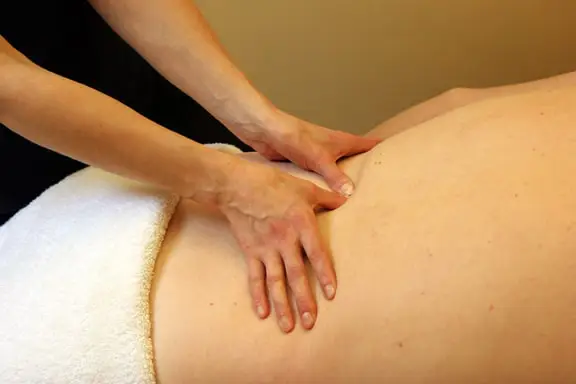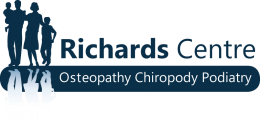Back pain
How to Help Back Pain?
Why would you see an Osteopath for Back Pain?
If you have lower back pain symptoms that’s causing significant problems or doesn’t seem to be improving with pain relief, it could be worth trying manual therapy to help relieve it. An osteopath can offer this type of treatment for any type of short or long-term general lower back pain. They can also help with sciatica – pain that spreads from your back down your legs.
Osteopathy is a system of diagnosing and treating medical conditions that focuses on the structure and functioning of your whole body. It’s based on the idea that your general health and wellbeing depend on your bones, muscles, ligaments and connective tissues all working smoothly together. Back pain is one of the main conditions for which people seek help from an osteopath.
The theory behind manual therapy and other alternative treatments is that a properly aligned musculoskeletal structure will enable the body to heal itself after a traumatic event. It is all about the link between the structure and function of the human body.
Osteopathic medicine provides drug-free non-invasive manual treatment that focuses on strengthening the musculoskeletal frameworks to:
- Increase or restore joint mobility
- Relieve muscle tension
- Reduce pain and stiffness in muscles and joints
Osteopathic Medicine for Back Pain
When it comes to back pain, people complain about various symptoms, ranging from stiffness to severe pain in different locations from the top of the neck to the pelvis. For some, the pressure from the back on the nerves may be the cause of numbness in the legs and arms while for others it just feels like pins and needles. Such forms of pain can come on suddenly or over time, and be located anywhere in the spine.
Whether it’s lower back pain middle back pain , or upper back pain , there is good evidence that osteopathic medicine is effective in treating it. As the cause of pain differs from one individual to another, sometimes it may involve treating other body areas such as the neck, the hips, or the knees.

Back Pain and Sciatica
Back pain, in particular lower back pain, sciatica and ‘trapped nerves’ are among the most common reasons adults seek osteopathic treatment. This is unsurprising, given that up to 80% of people will suffer from back pain in their lifetime. The fact you are reading this, probably means you have personal experience of back pain or know someone who does. If so, don’t despair, there is plenty you can do to alleviate your pain and reduce the risk of reoccurrence.
There are many causes for back pain and muscle pain, but lifestyle is nearly always a significant factor. For example, if your job involves sitting at a computer all day or lots of driving, you are more likely to experience back or neck pain than other people. At the other end of the scale, a sudden increase or change in activity can also be bad for your back.
The thing we have less influence over is age. Incidence of back pain increases the older we get, due to normal age-related changes, such as gradual loss of disc elasticity and ‘wear and tear’ to spinal joints.
What will an Osteopath Do?
A first appointment with an osteopath will usually take around 45 minutes to an hour. Your osteopath will want to talk to you about your back pain and your health in general, as well as any other treatment you’re having. They’ll probably ask you to remove some clothing so that they can examine you. If so, you should be provided with a gown or a towel. If you feel uncomfortable, you can ask for a friend or relative to accompany you.
Your osteopath will look at your whole body in relation to your back pain – they may observe you making some simple movements and stretches. They’ll also feel around your joints, ligaments and tissues with their hands (this is called palpation).
Your osteopath will talk to you about what they’ve found from their examination before they go ahead with any treatment. They’ll explain what treatment they recommend, and the benefits and risks involved. They should also talk to you about how many sessions you’re likely to need and what this will cost. Be sure to ask your osteopath any questions you might have. It’s important that you fully understand what is involved in your treatment because you’ll be asked to sign a consent form to go ahead with the treatment.
Osteopath Techniques for Back Pain
Your osteopath will use manual techniques to try and reduce your back pain. Osteopathy techniques aim to increase the movement in your joints and relieve muscle tension.
They may use;
- Massage
- Manipulation
- Muscle Energy Technique
- Functional Technique
- Counter strain
What to expect after my appointment
You may feel sore for the first few days after your treatment. If you have any concerns, contact your osteopath for advice.
Manual therapies such as those offered by an osteopath, are usually only one part of your treatment for back pain. It’s important that you also follow any advice your osteopath may give you on looking after your back and exercises you can do. This will give you the best chance of a quick recovery, and will help to stop your back pain coming back.
Doctors agree that physical treatments such as Osteopathy can be helpful as early as possible after the onset of symptoms. Four out of five people will be affected by backache at some time in their lives. Most back trouble responds well to osteopathic treatment. The National Institute for Health and Care Excellence (NICE) recommends manual therapy alongside exercise as an option for lower back pain, with or without Sciatica. Osteopaths are ideally suited to provide both.

